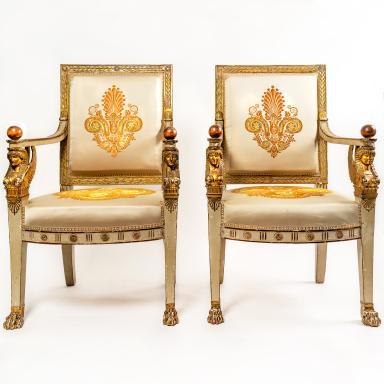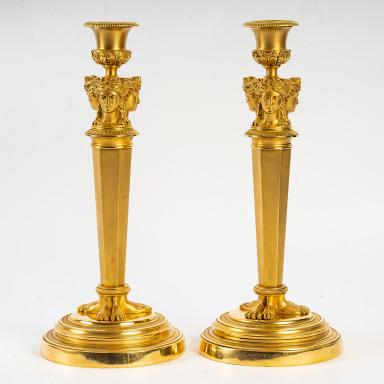Empire Style
By Empire furniture and furnishings, we mean the furniture creation that covers the period starting with the arrival to power of Napoleon Bonaparte: an iconic genre that must serve the influence and the hold of the Emperor on Europe through the Fine Arts but also the design and decoration.
Rejecting the historical furniture conventions of the Capets or the Bourbons, it is not in the history of France that he draws a renewal of the style but in the great history of the world and in the greatness that he imagines of the Pharaohs, of the Empire of Alexander the Great or even that of Caesar. The furniture is therefore solid and straight; in solid mahogany for the furniture of pomp and circumstance and in mahogany veneer for the common furniture until the ban on the import in 1810. Other species were then used such as beech, walnut, elm, etc.
Nothing being left to chance in the creation of this new society, symmetry reigns supreme in the creation of furniture and in the ornamentation, populated with bees, eagles, stars, or antique carriages, winged loves and victories; and of course, the N of Napoleon and the capital I of Imperator.
We also owe to the imperial style some innovations: if some furniture such as the curule chair, the meridian continue to develop in the homes, extending the Directoire Style, the Empire also invents the mirror Psyche and the bedside table Somno.
Pierre Antoine Bellangé, Pierre-François-Léonard Fontaine, Claude Galle, Georges II Jacob, Jacob-Desmalter, Pierre Benoît Marcion, Jean-Baptise-Claude Odiot, Charles Percier, Pierre-Philippe Thomire.

